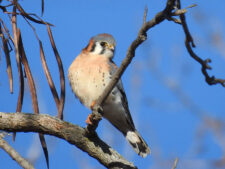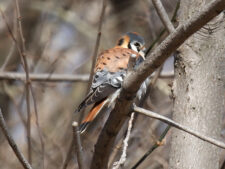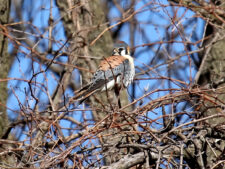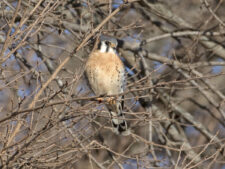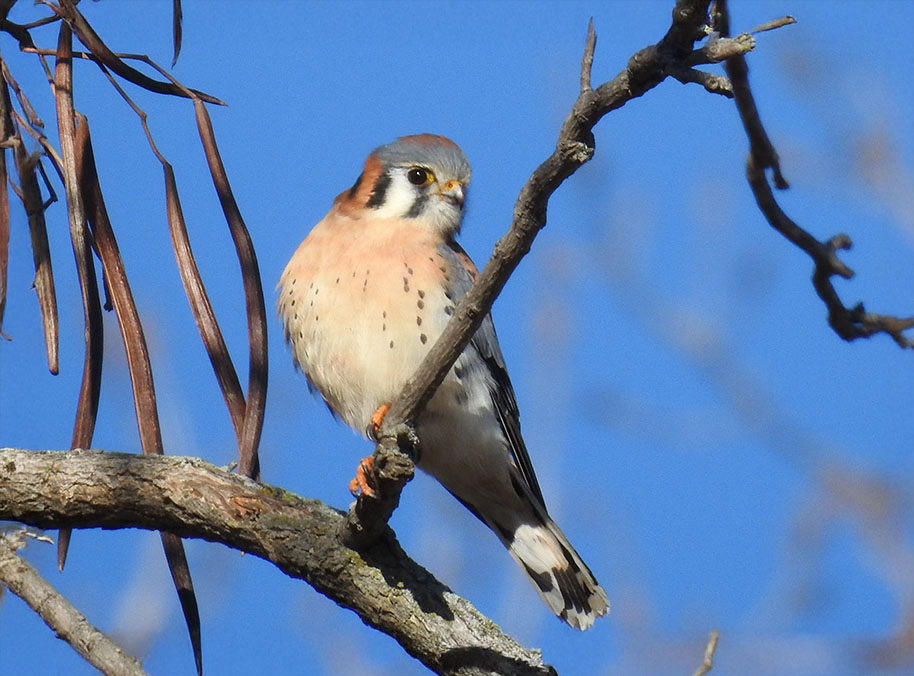
9 inches long with a 22 inch wingspan. The American Kestrel is our smallest falcon. It has long, narrow, pointed wings and a long tail. It also has a gray crown and white cheeks with two black mustache marks on each side of the face. There is a black spot at the rear of the crown on both sides. The flight feathers are pale with dark barring. The adult male has slate blue wings. There is a rust patch on the crown and a rusty nape and back. The undersides are pale with small black spots. There are also black spots on the wings. The tip of the rusty tail has a narrow white band with a broad black band just above the white band. The female and immature birds have a pale buff breast streaked with brown and a rust-brown back, and wings. The back and upperwing are barred with black. The rust-brown tail has numerous dark bars of even width with a narrow white terminal band.
The American Kestrel nests in the Omaha area and is uncommon during the winter months but can be somewhat common in the other months. It prefers open areas and may best be seen near the parking lot in the wetlands.
The American Kestrel is sometimes called a Sparrow Hawk. It favors open country and is often seen on fencepost or wires where it may bob its tail. It eats large insects, bats, rodents, insects, frogs, small reptiles, and birds. Many times it can be seen hovering. During flight it alternates several rapid wing beats with glides. It also will soar on thermals. The American Kestrel nests in cavities including man made cavities. Its voice is a shrill screaming “killy, killy, killy”.
Disclaimer: The content of NatureSearch is provided by dedicated volunteer Naturalists of Fontenelle Forest who strive to provide the most accurate information available. Contributors of the images retain their copyrights. The point of contact for this page is: Phil Swanson.

